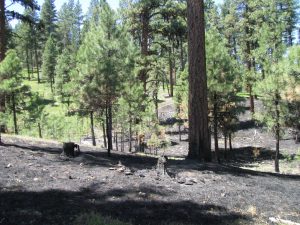Prescribed Burns Over the Long Haul: Ponderosa Pine Vegetation Resists Effects of Low-Severity Fire
By U.S. Forest Service – Pacific Northwest Research Station
5/23/2019
Prescribed burning is an important active management approach that can address the fuel buildup and wildfire hazards that currently face western forests after a century of fire exclusion and suppression. Although prescribed burns are applied widely across the United States, their effects aren’t always well-documented. That means managers can’t anticipate how well prescribed burns will, ultimately, achieve their ecological and restoration goals and under what treatment conditions. What’s more, unsuitable prescribed fire regimes may actually be harmful to some ecosystems and their species, potentially exacerbating other management concerns such as invasive species. Ponderosa pine forests of the intermountain West—which cover approximately 27 million acres—are one of the forest types where prescribed burn effectiveness is not fully understood.
Recognizing this need, Forest Service research ecologist Becky Kerns and Oregon State University senior faculty research assistant Michelle Day documented the effects of five different prescribed fire regimes in Oregon’s Malheur National Forest over time. Their study, published in the journal Ecosphere, spanned 15 years and examined the effects of prescribed fire regimes on plant communities and, in particular, the forest understory.
“Our results suggest that common prescribed fire application under very low-severity prescriptions may not do the ‘work’ of wildfire or the work we expect given contemporary conditions, so management outcomes related to prescribed fire use, like a vigorous vegetation response or restoration of the understory, may not be as anticipated,” Day said. “With so many changing dynamics, the past might not be the best ‘baseline’ for the future.”
Read more here: https://www.fs.usda.gov/pnw/news-releases/prescribed-burns-over-long-haul-ponderosa-pine-vegetation-resists-effects-low-severity
